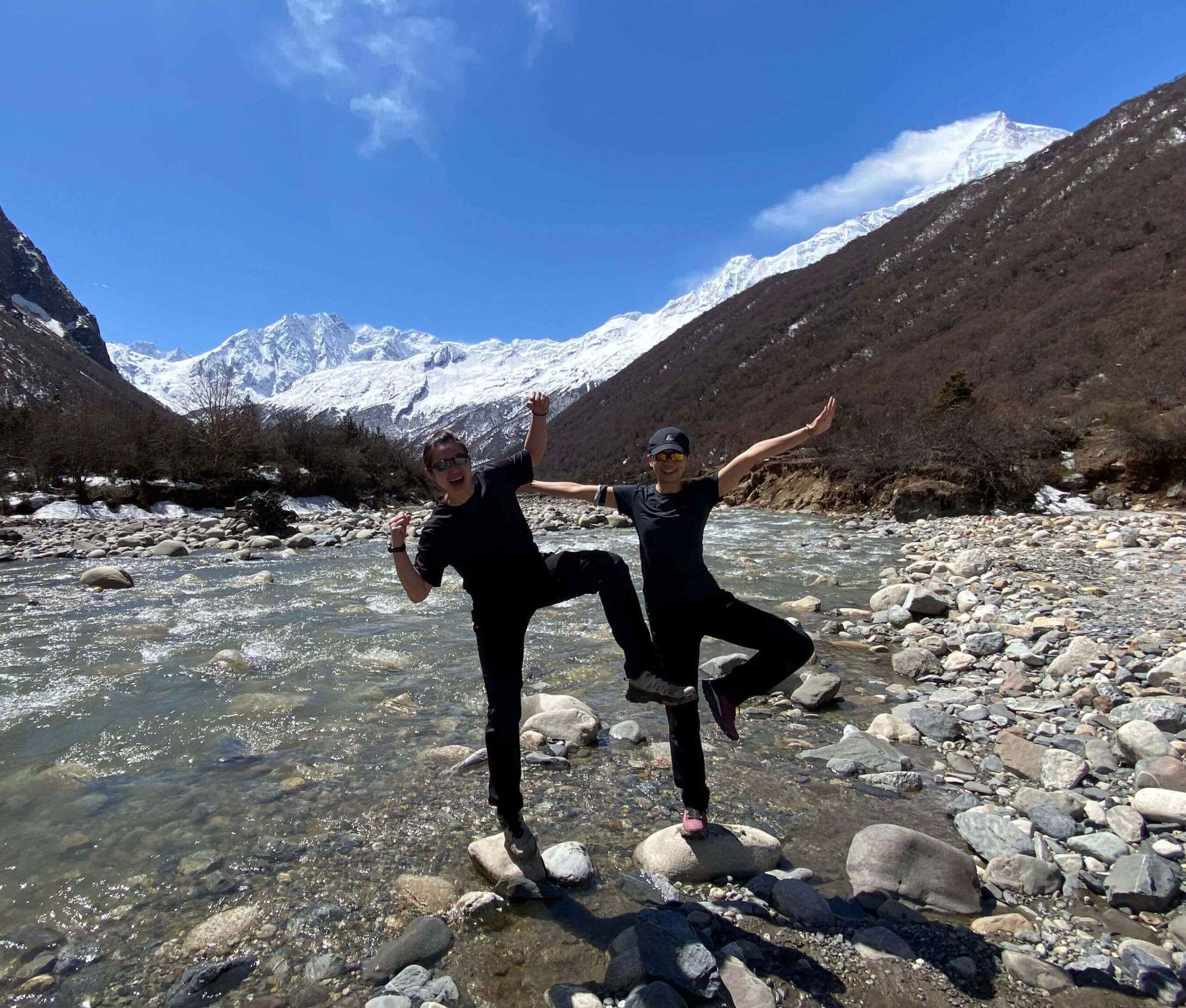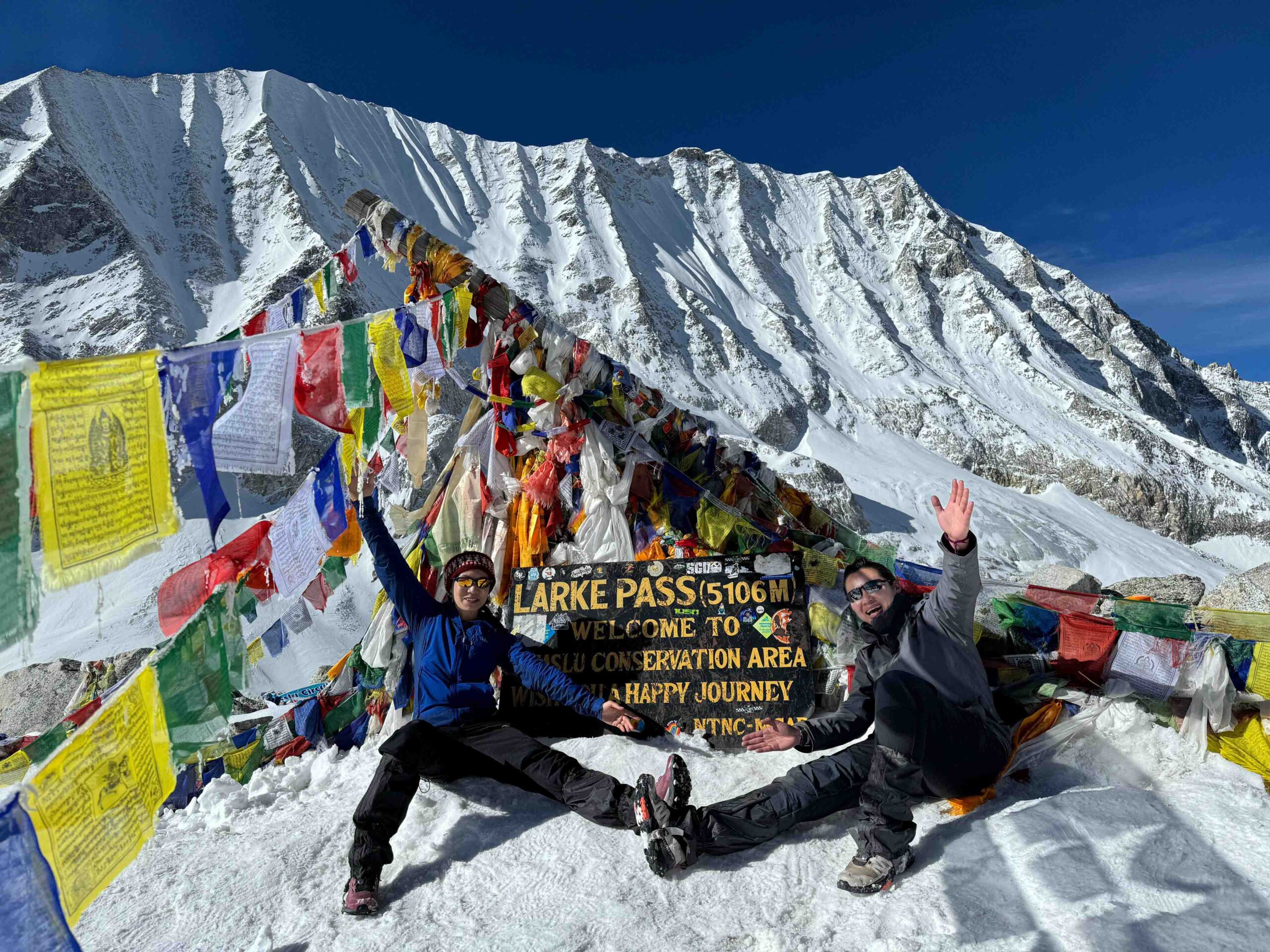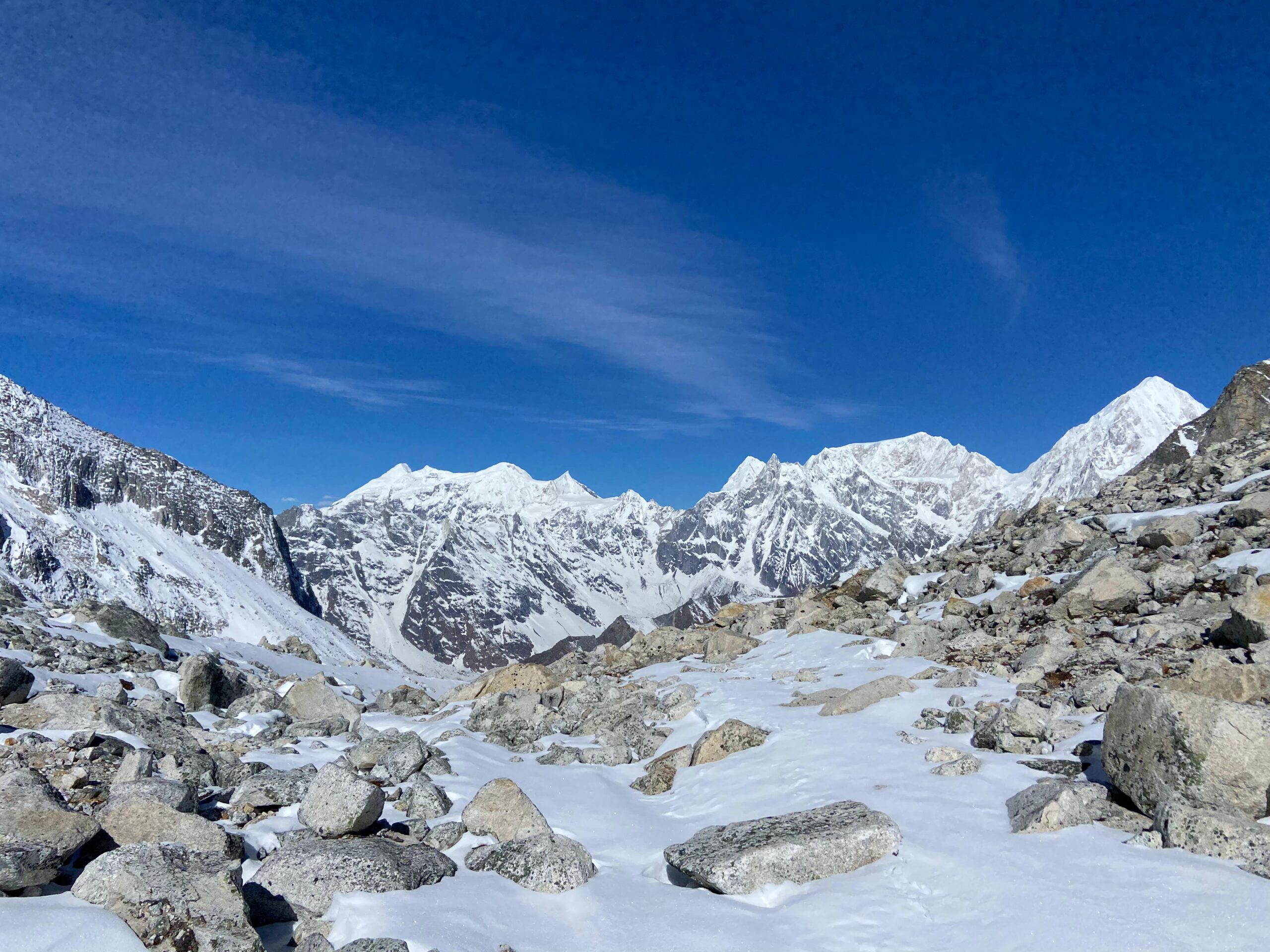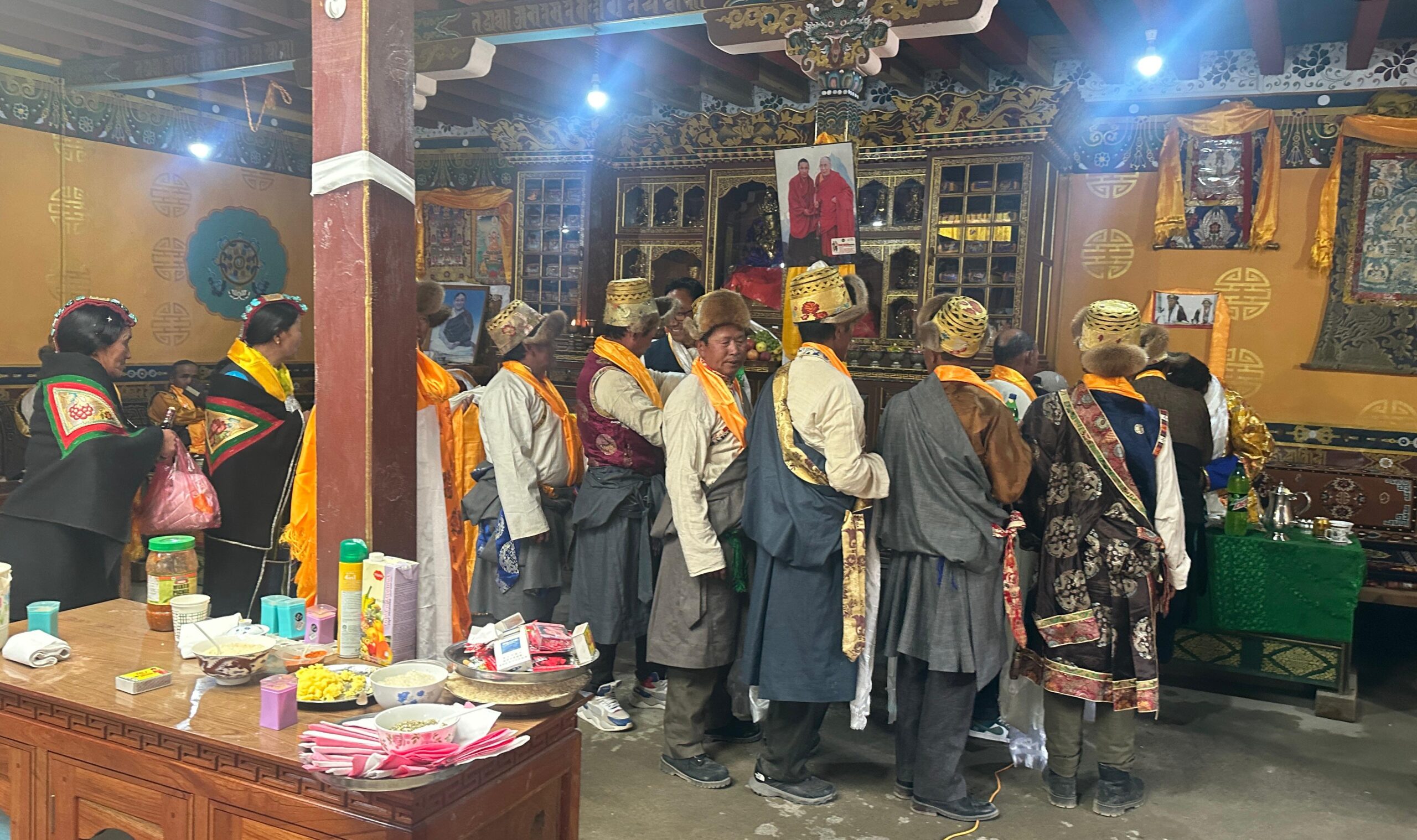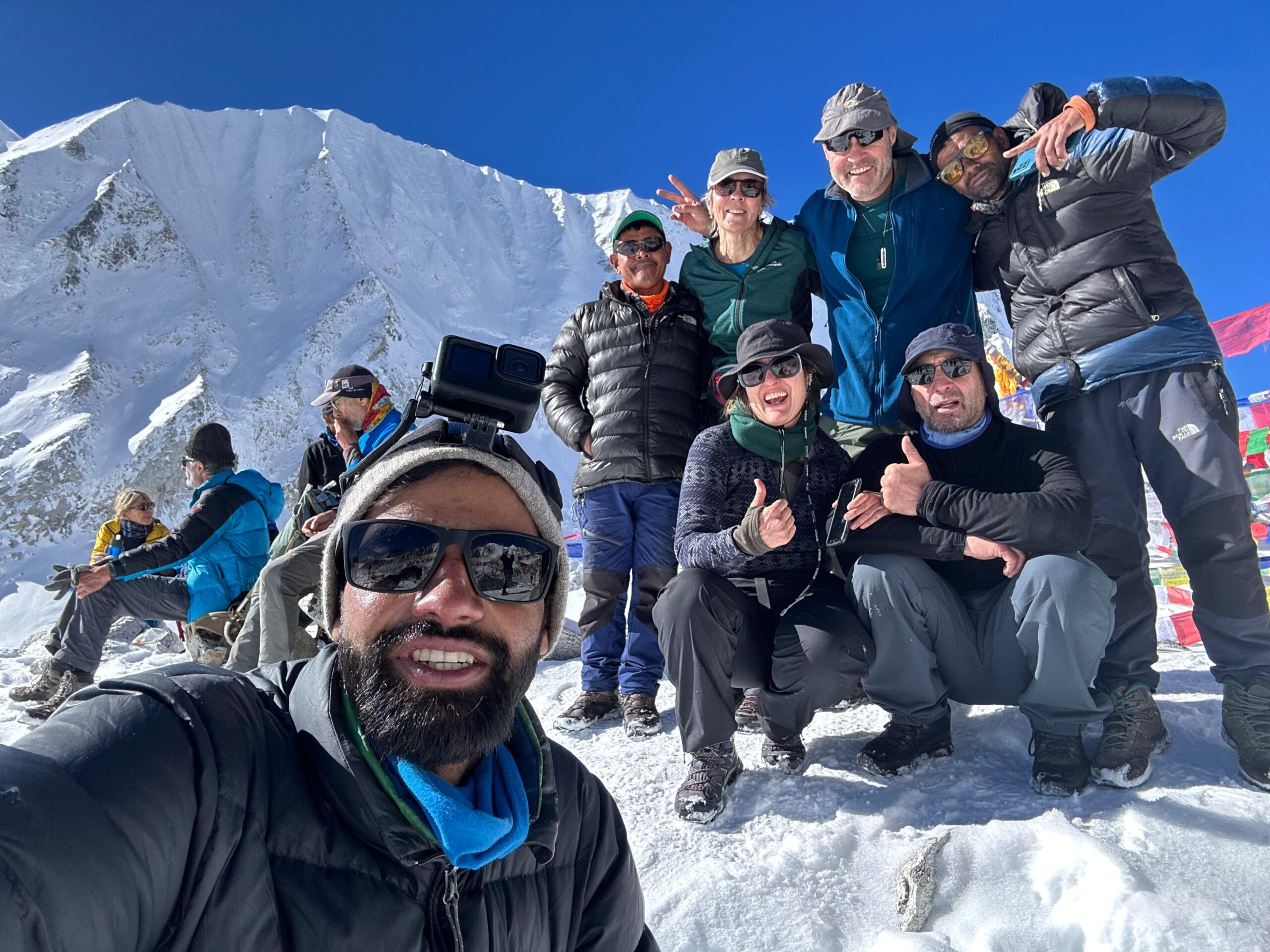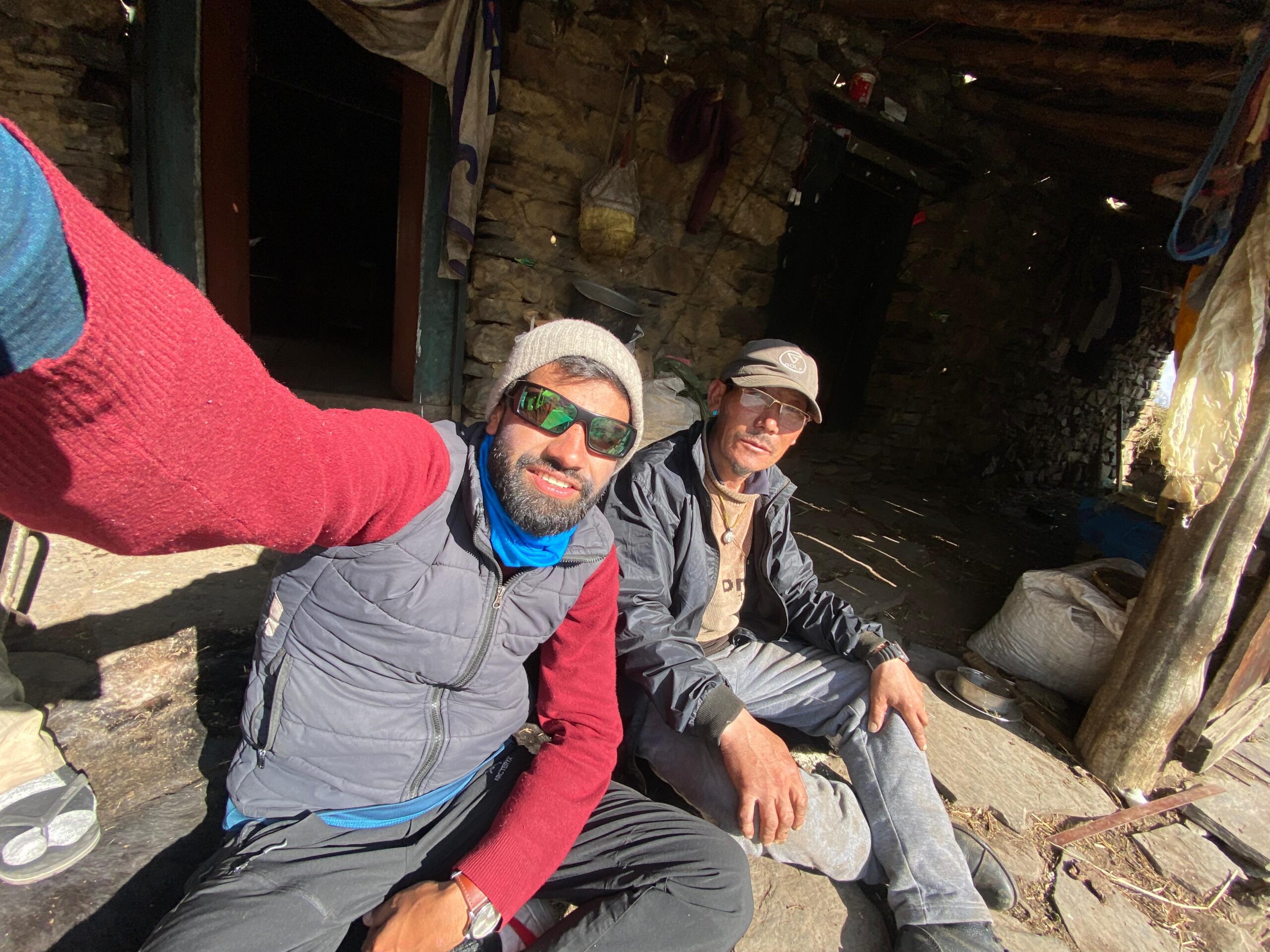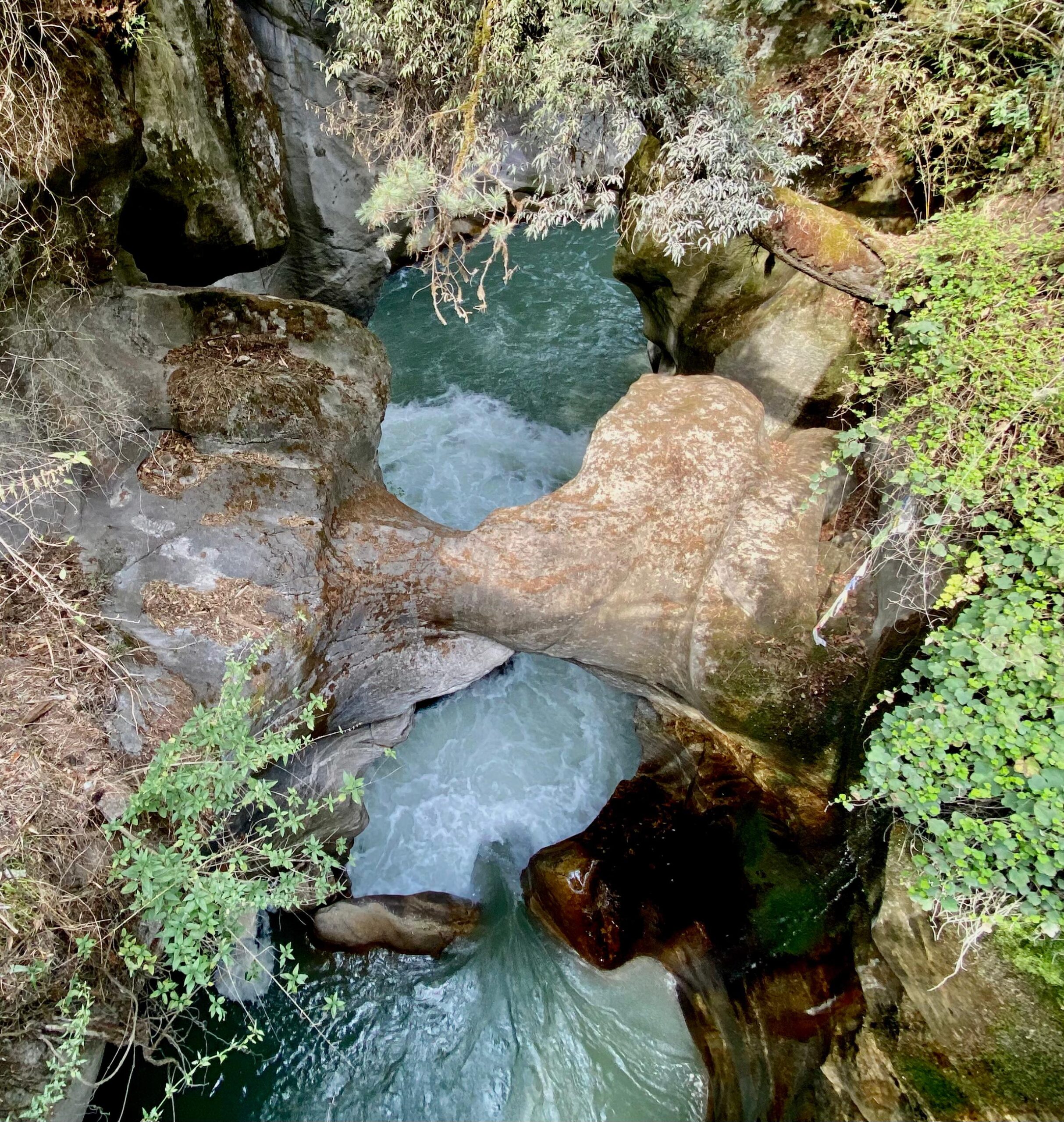Introduction to Manaslu Circuit Trek
The Manaslu Circuit Trek is a breathtaking and off-the-beaten-path Himalayan journey that circles the imposing Mount Manaslu (8,163 meters), the eighth-highest mountain in the world. Contrary to the more popular trails of Everest and Annapurna, this trek offers an actual adventure through remote villages, ancient Buddhist monasteries, and alpine vistas. The trek gradually ascends from the subtropical valleys of Soti Khola to arid high-altitude terrain surrounding Larke La Pass (5,106 meters) in a span of diverse topography and climate zones, a span of less than two weeks.
The region is culturally dominated by Tibetan Buddhism, as evident in the language, attire, and lifestyle of the locals. Ancient mani walls, ancient gompas (monasteries) dating back centuries, and prayer flags punctuate the trail along the way, so that it is not only a physical journey but a deeply spiritual one as well. The Manaslu Circuit Trek is a less crowded, more serene and highly rewarding trek, best for trekkers seeking to experience an empty trail, authenticity and untouched natural beauty without the commercial influence and luxury amenities.
Highlights of Manaslu Circuit Trek
- The highlight and most challenging part of the trek is going along the Larke La Pass
(5,106m) offers a breathtaking, 360-degree view of the surrounding Himalayan giants. - Trips to remote Sama Gaon and Samdo Villages provide authentic glimpses into
Traditional Himalayan life, Tibetan lifestyles, and local hospitality. - Spur trips from Sama Gaon to Mount Manaslu Base Camp pay dividends with
Breathtaking glacier scenery. - The trail passes through isolated forests, river gorges, alpine meadows, and glacier-cut
Valleys—untouched by man’s modernisation. - Ancient Buddhist monasteries, whizzing prayer wheels, and lengthy mani walls (Buddhist
mantra inscriptions on stones) line the trail, adding a spiritual touch.
Why is the Manaslu Region a Restricted Area?
The Manaslu Region, situated in the Gorkha district of Nepal, shares a close, sensitive border.
With Tibet (China). Due to its proximity and strategic significance, the region was out of bounds.
For foreigners until 1991. Even after the region was opened up, the region was announced as a
A restricted area to preserve its fragile ecological system and Tibetan-influenced way of life.
Restricted status is used to limit the number of trekkers, thus preventing environmental damage.
Degradation, over-commercialisation, and disruption of culture. Trekkers who go into the
Manaslu region requires a special Restricted Area Permit (RAP) and must be accompanied by a
Licensed guide, with at least two trekkers in the party. Controlled entry promotes sustainability.
Tourism while protecting the cultures of ethnic communities like the Nubri and Tsum peoples.
The result is a region still free, unbroken, and hugely satisfying to those who bother to venture.
Into it.
How long is the Manaslu Circuit Trek?
The Manaslu Circuit Trek typically takes 14 to 18 days, depending on your pace, acclimatisation.
Needs, and whether you do optional side trips like Manaslu Base Camp or Pungyen Gompa.
The trek travels about 177 kilometres (110 miles), from Machha Khola to Dharapani, before
Driving back to Kathmandu. Also, it’s a moderately paced trek that ascends gradually to allow for altitude.
Acclimatisation has two rest days for high-altitude adjustment. For time-bound trekkers, it
It may be feasible to shorten the trek a bit, but having a timely itinerary ensures safety, enjoyment,
And a more enriched cultural and natural experience.
The General Itinerary for the Manaslu Circuit Trek
The Manaslu Circuit Trek usually takes about 15 days, including your arrival, acclimatisation,
And return to Kathmandu. Here’s a day-by-day itinerary breakdown:
Day 1: Arrival in Kathmandu
Day 2: Trek Preparation & Half-Day Kathmandu Sightseeing
Day 3: Drive from Kathmandu to Machha Khola (930 m / 3,051 ft) – 7 hrs
Day 4: Trek from Machha Khola to Jagat (1,340 m / 4,396 ft) – 6 hrs
Day 5: Trek from Jagat to Pewa/Deng (1,804 m / 5,918 ft) – 6 hrs
Day 6: Trek from Pewa/Deng to Namrung (2,630 m / 8,628 ft) – 6 hrs
Day 7: Trek from Namrung to Shyala (3,520 m / 11,549 ft) – 4–6 hrs
Day 8: Trek from Shyala to Sama Gaun (3,530 m / 11,581 ft) – 4 hrs
Day 9: Acclimatisation Day in Sama Gaun – Hike to Manaslu Base Camp / Birendra Lake
Day 10: Trek from Sama Gaun to Samdo (3,865 m / 12,680 ft) – 3 hrs
Day 11: Trek from Samdo to Dharamsala (4,460 m / 14,632 ft) – 4 hrs
Day 12: Cross Larke La Pass (5,106 m) and trek to Bimthang (3,590 m / 11,778 ft) – 10 hrs
Day 13: Trek from Bimthang to Dharapani (1,970 m / 6,463 ft) – 7 hrs
Day 14: Drive from Dharapani to Kathmandu (1,300 m / 4,265 ft) – 10 hrs
Day 15: Departure from Ka
Why Trek in the Manaslu Region
The Manaslu Region offers the perfect blend of unspoiled Himalayan adventure and culture.
Diversity, and therefore, it is a place that cannot be avoided by trekkers who are seeking.
Something more natural and peaceful. The greatest reason to trek here is its strong
Tibetan-Buddhist culture. The trek winds its way through villages at high altitudes, where one.
Gets to experience centuries-old traditions, hike to monasteries draped in prayer flags, and
Interact with people who share a close relationship with nature and spirituality. Contrasted with
The touristy trails of Everest and Annapurna, and Manaslu receive many fewer trekkers, and
Therefore, offers a calmer and more intimate trekking experience.
The scenery is sheer wonder on the trekking trail with Himalayan titans like Manaslu (8,163m), Himlung Himal, Cheo Himal, and Annapurna II standing tall on the horizon. Flora and fauna too abound in the region, from rhododendron and pine forests to alpine meadows and glacial streams. Along the trekking trail, Himalayan tahr, langurs, snow leopards (rarely spotted), and numerous birds are sighted by the trekker. The trek concludes with a dramatic climb across Larke La Pass (5,106m)—a true high-altitude pass.
Experience with great views and a strong sense of achievement. The unique combination of
Cultural richness, raw natural beauty and a physical challenge make Circuit a unique trekking destination among other trekking destinations in Nepal.
How difficult is the Manaslu Circuit Trek?
The Manaslu Circuit Trek is a difficult to challenging trek, primarily due to its high altitude and
Long days of trekking in the isolated region. Technically not a climb or a mountaineering
Expedition, one must nonetheless have stamina for long days of physical activity and be
Capable of hiking 5 to 8 hours a day on varied terrain—forest paths, rock climbs, and snowy
Passes.
The most arduous test of the trek is the crossing of Larke La Pass (5,106 meters), where the air.
It is thin, and the ascent is taxing. Also, basic teahouse overnight stays with minimal heating and
facilities, especially at higher altitudes like Dharamsala or Samdo, require mental and physical
Resilience. With good acclimatisation, adequate physical fitness, and the guidance of seasoned
Trekking staff, the Manaslu Circuit is accessible to most walkers who have some hiking experience.
Which is the Best Season for the Manaslu Circuit Trek?
The best season to trek the Manaslu Circuit is spring (March to May) and autumn (September to
November). Spring has beautiful weather with rhododendrons in bloom on trails, which makes it.
Healthy weather in general, and perfect for trekking and photography. Autumn is the peak season. Due to its pleasant weather, cold breeze, and excellent view of the mountains, including Mount Manaslu and other nearby peaks. At this point, the skies are normally clear and the temperatures are. Moderate—perfect weather for high-altitude trekking. The monsoon season (June to August) must be avoided as trails are slushy, leeches are a threat, and visibility is bad. Likewise, winter Months (December to February) are extremely cold and snow-burdened, especially in the Larke. Pass area, so it is not safe and usually impassable.
What is the Fitness Level Required for the Manaslu Circuit Trek?
The Manaslu Circuit Trek is graded as a moderate to challenging trek, and trekkers need to be
In good physical condition. Trekkers can anticipate walking 6 to 8 hours a day on challenging terrain. Terrain at times, either going up or down steeply. Technical climbing skills are not necessary, but Hiking or trekking experience is highly advisable. It is recommended to start cardiovascular training (e.g., jogging, cycling, or swimming) and light strength training at least 1–2 months before the trek. Endurance exercises, core strength, and leg conditioning will significantly improve. Contribute to your convenience and performance on the trail.
How Cold is the Manaslu Circuit Trek?
Temperatures during the Manaslu Circuit Trek vary with altitude and season. Temperatures of
10°C to 20°C is typically comfortable during the daytime at lower altitudes. The higher you
Climb, however, particularly above 3,500 meters, temperatures drop. High-altitude daytime
temperatures, for example, at Sama Gaun, Samdo, and Dharamshala, range between –5°C to
10°C, and nights become cold. At Larke Pass (5,106m), especially in the morning passes, the
Temperature falls to –15°C or even below, and hence, good winter gear is strictly essential for a
Pleasant and safe hike.
Facilities in the Manaslu Trek?
Internet and communication facilities in the Manaslu region are quite basic and limited. While
Some tea houses provide Wi-Fi, especially in larger villages like Sama Gaon or Samdo. It is
Slow, not stable, and at an extra charge. Do not expect ongoing access to the internet.
Throughout the trek. Electricity is generally available in all but the remotest villages, though it can be from solar.
Panels, especially at the higher altitudes. Charging of phones or cameras could be extra, and
There could be restricted electricity supply or power cuts at times. Bring a solar recharger.
Or a power bank. For mobile networks, NTC (Nepal Telecom) has better coverage than Ncell in this remote area.
Region, although the signal strength is still weak and intermittent in higher or more isolated areas
Locations. Do not rely on mobile data or calls for regular communication—use them only as an
Emergency backup.
How expensive is it to do the Manaslu Circuit Trek?
The total cost of trekking the Manaslu Circuit typically ranges from $900 to $1,200 per person for a
14-day trek, depending on the services and your preference while travelling. The cost of permits
Forms the major chunk of the expenditure, ranging from $160 to $200, which includes the
Manaslu Restricted Area Permit (MRAP), Manaslu Conservation Area Permit (MCAP), and
Annapurna Conservation Area Permit (ACAP). There needs to be a licensed guide, usually.
Costing $25 to $30 per day, and an optional but recommended porter who will charge around
$20 per day for anyone wanting to reduce their load.
Meals and accommodation daily will be between $25 $35, depending on how far into the wilderness one is. Transportation cost for the drive to Machha Khola and return from Dharapani to Kathmandu is approximately $60 to 80 in total. Budget trekking in groups can save on some of these costs, but those.
Those desiring more comfort and flexibility can pay a bit more.
Is Solo Travel or Trekking Without a Guide Possible in the Manaslu Circuit Trek?
No, trekking alone is not allowed in the Manaslu Circuit as it passes through a restricted zone.
According to Nepalese government rules, you must trek with at least two people, and you will
Have to hire a licensed trekking guide. Safety, prevention of illegal incursion into the sensitive border
Areas and preservation of the vulnerable culture and nature are the reasons why such rules are
Put into practice. Permits can only be issued through registered trekking agencies, so you’ll
Need to plan your trip with an official guide and agency.
How good is the Food and Safe Drinking Water on the Manaslu Circuit Trek?
Food in the Manaslu Circuit Trek is provided by local teahouses, which offer plain yet nutritious food.
Suitable for trekkers. These consist of the Nepali favourite dal bhat (rice, lentils, and veggies),
Tibetan noodles, momos (dumplings), porridge, pancakes, and fried rice. While limited at high
Altitudes, meals are hot, freshly cooked, and sufficient to keep your energy levels boosted.
For water to drink, bottled water is available at lower elevations but costs more the higher you go.
Climb. Boiled water is also found in most teahouses for a minimal fee. You should also carry
Your purification tablets or portable filter, as tap water is unsafe to drink without processing.
One must drink regularly, especially at high altitude, so be careful in managing your water.
Intake.
What are the accommodation options during the Manaslu Circuit Trek?
The accommodation facilities during the Manaslu Circuit Trek are mainly based on local tea.
Houses that are locally managed and owned. The tea houses usually have large rooms with two.
Single beds and shared toilet facilities. They do offer blankets; however, having a personal
A Sleeping bag is highly recommended for warmth and hygiene, especially in higher villages.
Several of the teahouses do have hot showers (gas or solar heaters) for a charge, although not.
Always available. Electricity and charging stations may be limited or cost extra, so it is best to
Carry a power bank. Not high class, but true experiences and warm hospitality are offered by
These teahouses.
Acute Mountain Sickness and Preventive Measures during the Manaslu Trek
Acute Mountain Sickness or AMS is one of the risks when trekking around the Manaslu Circuit.
To the high altitude, especially around Sama Gaon, Samdo, and Larke Pass (5,106 m). It typically occurs when your body does not adjust positively to lower oxygen at higher altitudes.
Common symptoms of AMS include headache, nausea, dizziness, loss of appetite, and Insomnia. All these signs should never be underestimated because AMS can become worse. And lead to very serious complications like HAPE (High Altitude Pulmonary EOedemaor HACE. (High Altitude Cerebral OedemIfff left alone. To avoid AMS, ascend slowly so your body can acclimatise. Remain well-hydrated and take a rest day, and abstain from alcohol. Most itineraries will have acclimatisation days near Sama Gaon. To facilitate this. Some people take Diamox (acetazolamide) as a preventive drug, but only under Medical guidance. Most crucially, if your symptoms get worse, descend at once—pushing higher can be life-threatening.
What is the Packing List for the Manaslu Circuit Trek?
Thoughtful packing is necessary for a safe and comfortable trek in the remote Manaslu region.
Below is the list of essentials:
- Trekking boots (broken in and waterproof)
- Down jacket (to keep warm in cold evenings and mornings)
- Thermal base layers (top and bottom)
- Fleece or insulated mid-layer
- Trekking pants, t-shirts, warm hat, sun hat, and gloves
- Rain gear (jacket and backpack cover)
- Sleeping bag with a rating of -10°C or less, since nights can be extremely cold
Trekking poles - Sun protection with sunglasses and sunscreen
- Headlamp and spare battery
- Backpack (40–50L for personal gear)
- Daypack (if hiring a porter)
- Personal toiletries, quick-drying towel, lip balm, hand sanitiser
- Basic first-aid kit and essential medications (pain killers, altitude medication, etc.)
Water purification tablets or a filter - Permit copies, passport, and additional passport photos
Pack lightly, but be adequately equipped for the cold, altitude, and remoteness of the Manaslu Circuit
What are the Necessary Permits & Papers for the Manaslu Circuit Trek?
To hike in the Manaslu region, several permits have to be acquired due to its restricted status.
And conservation importance:
Manaslu Restricted Area Permit (MRAP):
- (Sept–Nov): $100 per person for the first 7 days, $15 per day thereafter.
● (Dec–Aug): $75 for the first 7 days, $10 per day thereafter.
Manaslu Conservation Area Permit (MCAP): NPR 3,000 per person
Annapurna Conservation Area Permit (ACAP): NPR 3,000 per person
These permits must be obtained through a government-registered trekking agency, and aA
A licensed guide must accompany you to visit the restricted area.
Is Travel Insurance Required for the Manaslu Circuit Trek?
Yes, travel insurance is required for trekking in the Manaslu area. Your insurance should cover
Trekking to at least 6,000 meters in altitude and covering emergency helicopter evacuation and
Medical costs. As the area is isolated and there’s a risk of altitude sickness, injury, or Unexpected weather, having the right insurance cover ensures safety and peace of mind. Throughout the journey. Never forget to carry a copy of the insurance policy and emergency. Contact details for the trek.
Conclusion
Manaslu Circuit Trek is an ideal trek for anyone seeking a more remote, culturally rich, and less.
Touristy Himalayan trek. It offers a fulfilling mix of the grandeur of nature, Tibetan-type culture,
High-altitude passes and pristine wilderness. Adequate physical fitness, permits, and a qualified
Guides and some knowledge of altitude problems make this trek challenging yet highly Rewarding—an experience you will cherish for years to come after you get back.

